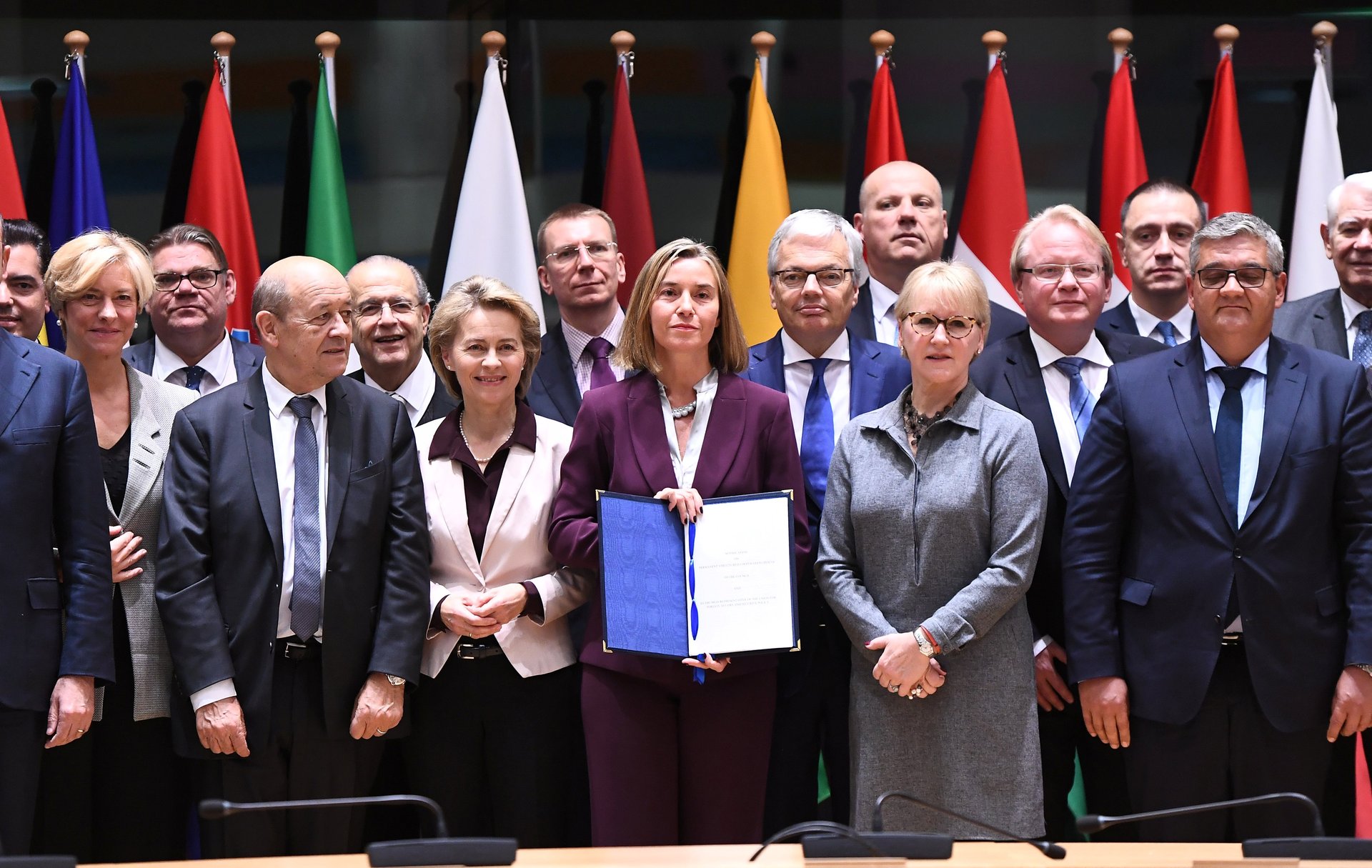The EU signed a “historic” deal to integrate 23 armies to shake off its US dependence
It took 70 years, but the European Union finally signed a pact today (Nov. 13) agreeing to integrate military funding, weapons development, and deployment of European defenses.


It took 70 years, but the European Union finally signed a pact today (Nov. 13) agreeing to integrate military funding, weapons development, and deployment of European defenses.
US president’s Donald Trump’s frequent accusations that EU countries do not pay enough into NATO has been one catalyst for them move forward with a unified plan for military cooperation. The other is that it could legitimately diminish the bloc’s dependence on US military support.
EU foreign policy chief Federica Mogherini, called the pact “historic” as “the real problem is not how much we spend, it is the fact we spend in a fragmented manner.” She also said it would strengthen the work of the US-led NATO.
The UK had always resisted the idea of joint EU defense, fearing some kind of big “European army,” but the country’s planned exit from the bloc has removed that hurdle, allowing 23 other EU countries to move forward. Once Brexit happens, the UK could still possibly be involved, but for a price.
The group will have a €5 billion ($5.8 billion) European Defense Fund to buy weapons, a different fund for operations, and also get money from the EU budget for research. In the end, it means that the EU would have stronger, better synchronized national military forces to respond to crises together. German Foreign Minister Sigmar Gabriel called it a “milestone in European development.”
Co-development of weapons could be good news for European defense companies. “I think it is a potential game-changer,” Haman Buskhe, the CEO of Swedish defense company Saab told the Wall Street Journal (paywall). “This could develop new products and help increase efficiency in Europe.”
The next step will be for EU leaders to sign the legally binding agreement in December.